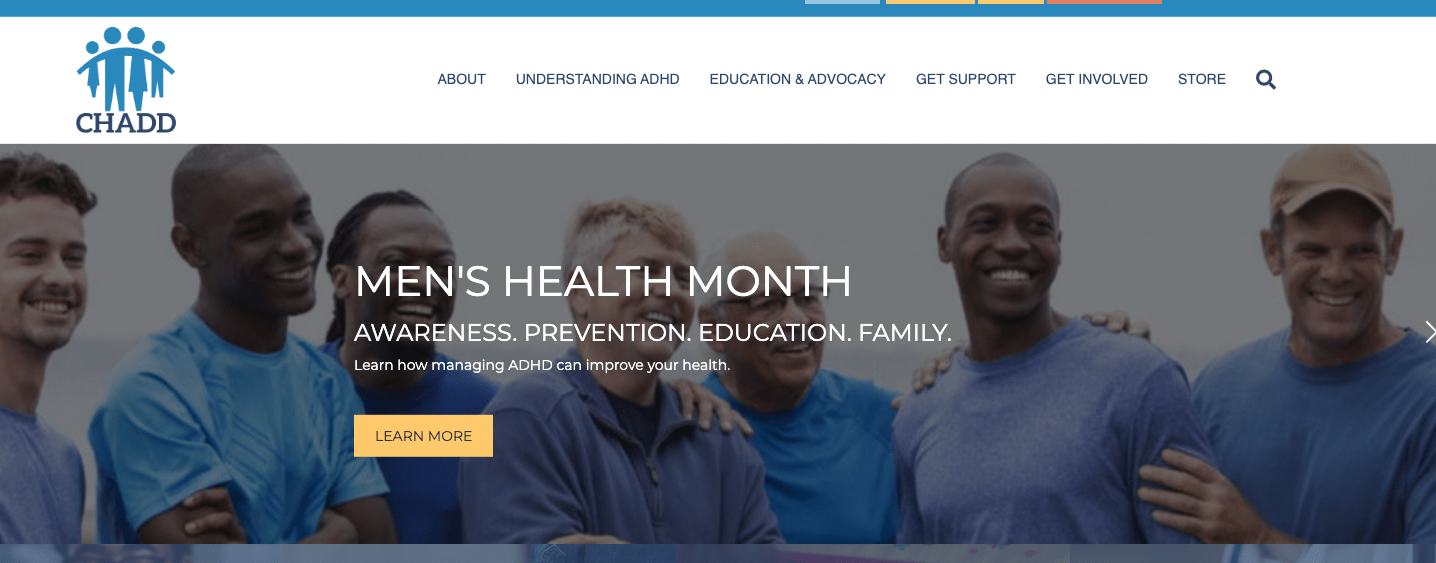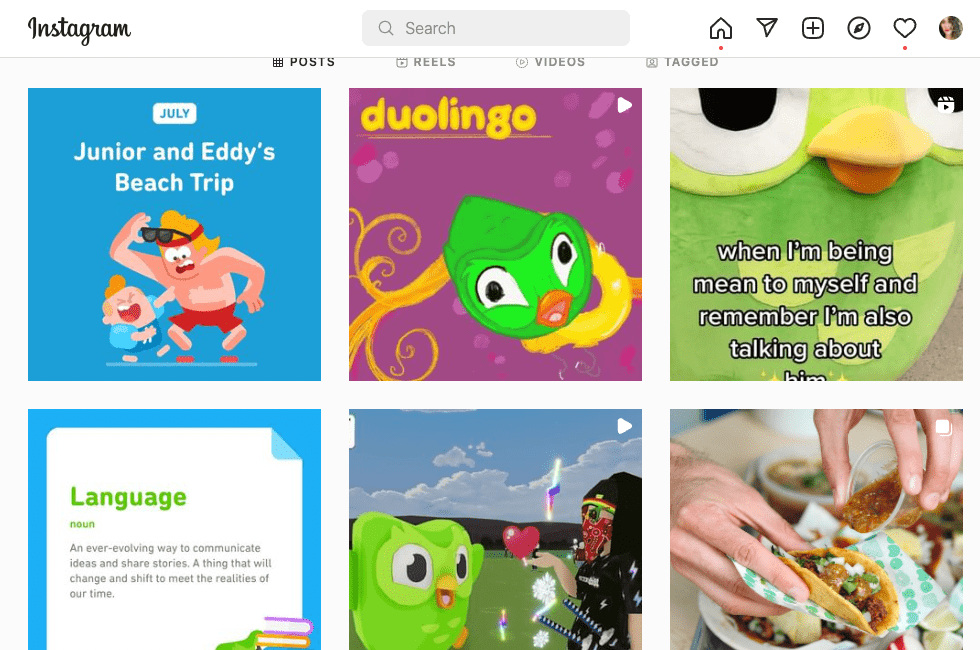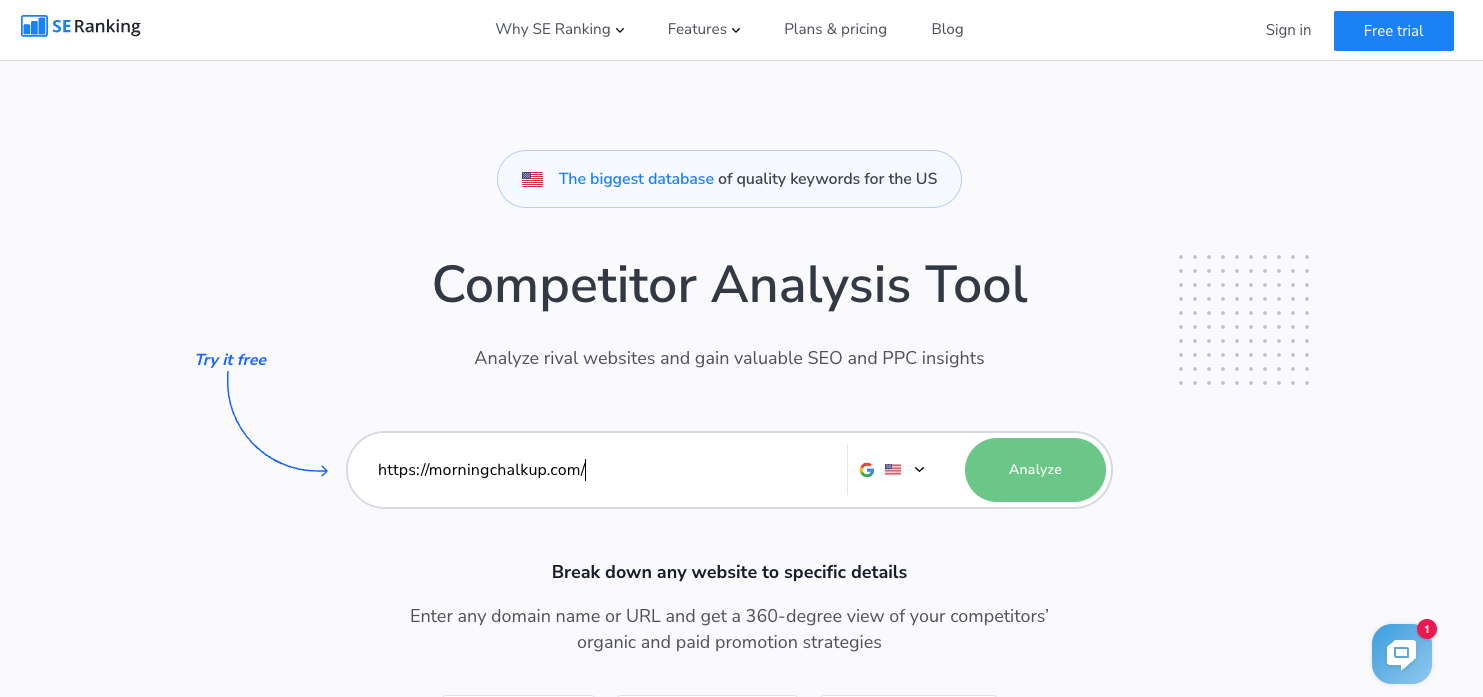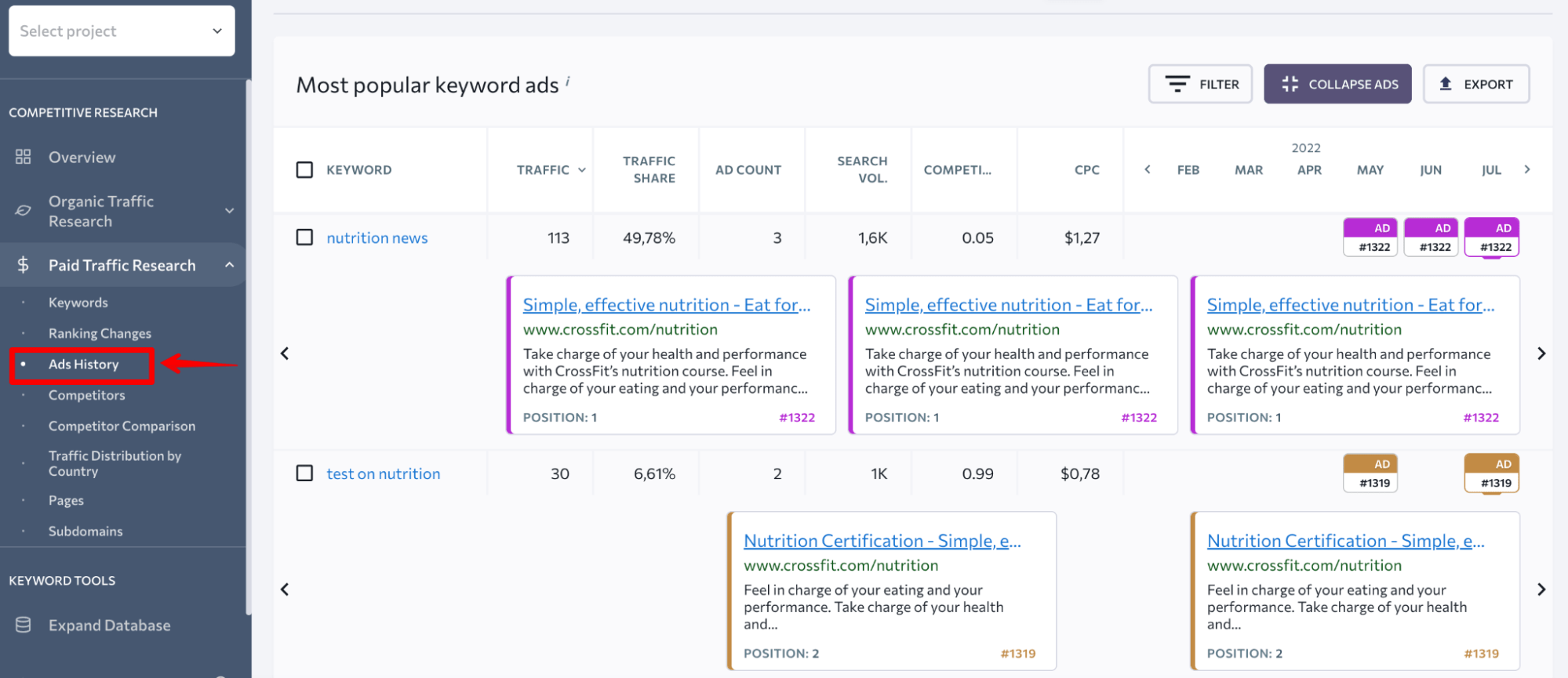Thank you for subscribing!
Your company’s online presence will stagnate if your customers don’t know who you are. That’s why you need to zero in on your brand voice. In this article, we’ll help you get clear on how to communicate with your audience across various channels within your business. You’ll also learn:
- Why your brand’s voice matters.
- How brand voice and brand tone are different
- Various brand voice types.
- Brand voice examples in marketing and advertising.
- Factors that influence brand voice.
- How to establish brand voice.
- How to apply your brand voice across different communication channels.
- And if need be, how to change your brand voice.
But first, we’ll start with the basics.
What is tone of voice?
Maybe you’re wondering why this post is centered around brand voice but the word tone is included in the title, too. Think back to your childhood, perhaps a time when you mouthed off to one of your parents. Maybe they responded by saying something like, “I don’t like your tone of voice!” This is a pretty straightforward message. They didn’t like the way you were talking to them. Maybe they even said that the tone you gave them was uncharacteristic of who you are. Of course, it was in your best interest to apologize to your parents and adjust how you spoke to them (your tone). Even if you thought your tone was appropriate, you had to change your tone to regain their approval.
This is a rudimentary example of what tone is, but the core message remains the same across all situations. If you deviate from your usual tone, it can confuse people. Sometimes it’s necessary to change your tone, but in some cases, like the one above, it can make people mad.
What is brand voice?
Brand voice is the way your brand conveys its unique personality to its audience, whether it’s written or spoken. This can include special greetings and phrases, your style, and the attitude/feeling behind your communication.
It might help to think of how different people in your life speak. Maybe your uncle is a straight shooter and gets his point across in a few succinct words. Meanwhile, your grandmother is much more conversational. Your best friend might be more aggressive and in-your-face, while your boss is more passive and soft-spoken.
It’s a similar story with brands.
Unlike brand tone, your brand voice should remain consistent across all communication platforms. Look at your content for instance. Your SEO and blogging is a chance to establish how you want to sound when you publish written content.
The same can be said for your SEO and social media approach. And your voice in advertising and marketing is no different. You especially want to knuckle down on the voice of your content if you’re spending money promoting your marketing collateral.
Brand voice vs brand tone of voice
Let’s make one crucial distinction before moving on. “Brand tone of voice” and “brand voice” are often used interchangeably, but they’re not the same. Your brand voice refers to your company’s overall personality, its values, and its perspectives. So your brand voice remains consistent no matter what. Remember your chatty grandma? Her brand voice might be warm, affectionate, and sentimental. That’s what she’s known for, but that doesn’t mean grandma is always sweet. She’s human after all.
Your brand tone of voice can change slightly depending on the situation. For example, the way you communicate might be different on Instagram than on TikTok, the latter of which leaves more room for controversial/opinionated content. You’re essentially reading the room.
So, your brand’s tone is how you sound when you communicate. Your brand voice is your overall personality. Both are important!
Why brand voice is important for your business
People should be able to instantly associate your content with your brand just by looking at it.
To set yourself apart from your competition, your brand voice should be consistent with your brand’s identity. For example, if your company sells seashells by the seashore, you might have a surfer-dude brand voice. Your customers might recognize your brand as the surfer-dude company that, like, sells seashells and stuff.
Read the room
But again, you have to use different tones depending on the situation. If you’re responding to a serious Quora question, you might want to pull back a bit on your surfer-dude personality and offer advice in a more lukewarm way.
Your tone of voice might also differ across product categories on your site. You don’t want to sound too relaxed and easygoing on a product page displaying custom-made seashell accessories to honor family members who have passed.
But no matter how serious the situation gets, you’re still you, right? You don’t have to change your brand’s personality to change its tone—and you shouldn’t. Statistics show that you’re even incentivized not to. Having a consistent brand voice could increase your revenue by as much as 33%.
Some research even says that 46% of customers would pay more for brands they trust. If your brand doesn’t know itself or it isn’t clear about it’s value structure, why should anyone care about what you have to say or what you offer?
In short, being consistent with who you are is crucial to building authority and credibility.
Types of brand voice
As you’re now aware, there are different brand voice types. The voice for your brand might be:
- Formal: Following rules of etiquette and convention, like the CDC.
- Informal: More relaxed and unofficial, such as Flo from Progressive
- Funny: Making people laugh, like Duolingo.
- Serious: More careful and considerate, such as Allstate.
- Factual: Sharing the real case and not opinions or interpretations of it, like LegalZoom.
- Optimistic: Promoting positivity and perseverance, like in former President Obama’s campaign
- Motivating: Inspiring confidence and hope, like CrossFit.
- Respectful: Showing deference, such as St. Jude Children’s Research Hospital.
- Assertive: More confident and aggressive, like the Me Too movement.
- Conversational: Casual and informal, like Dell Technologies.
Whichever you go with, you want to maintain this brand voice across all of your marketing and advertising channels and campaigns. From YouTube and Facebook to email marketing and UX writing, it should ideally remain the same. This is how you can become more recognizable to your audience.
And that builds trust.
Brand voice examples
It’ll help to illustrate what brand voice can look like. Let’s go through a few examples!
| Text | Tone of Voice | Impression |
| “52% of our users start with the free version before upgrading to a paid subscription. The remaining 48% goes straight to a paid subscription.” | Formal, factual | Statistic-based and concise; trying to prove a point to the reader with cold, hard facts |
| “You don’t have to struggle with your mental health alone. Our online therapists are here for you. Help is just a click away.” | Motivating, respectful | Empathizing with the user; encouraging them to seek help |
| “Food waste is destroying our planet and leaving millions hungry. The time to act is now.” | Assertive, serious | Urging the user to listen and take action |
You can see here how important word choice is. Just a few small adjustments can change the entire sentiment of the message.
What influences your brand voice?
Many factors go into your brandvoice. Three of the most important are:
- Your company’s profile specifics
- Your target audience
- The communication channels you use
Company profile
If you’ve ever clicked on an About us page, you’ve seen a company profile. Pages like these introduce to potential customers and partners what the company does, how it helps people, its mission, its strengths, and its goals. The company profile might also consist of an origin story and/or the motivation behind the company’s inception.
Marketing and advertising teams should carefully consider all of these things when settling on the company’s voice. A company that offers online legal counseling might have a completely different brand voice than an app that shows you who’s “stalking” you on social media.
Target audience
Your target audience also plays a role in determining your brand voice. Who are you trying to reach, and what problem are they trying to solve? An audience of individuals struggling with ADHD, for example, wouldn’t respond as well to the kind of voice that an audience of gamers would respond to.
Look at CHADD. This organization supports and provides resources for people with ADHD, their loved ones, educators, and other professionals.

Their brand voice—inclusive, sensitive, embracing—is completely different from Tony Robbins, who is a lot more aggressive (in a positive way).
Communication channels
Finally, consider your communication channels. If your brand relies solely on LinkedIn—a network of professionals—that’s something to think about. This would call for a very different approach from a brand that mostly utilizes TikTok.
Let’s go back to the Duolingo example—a brand that has become known for its slightly outrageous TikTok content. Note that their approach to Instagram is very different.


What makes a good brand voice?
Here are some key factors that go into shaping the brand voice that’s true to you and what you do:
- A good brand voice should be relatable to your audience. It should cater to them and offer them what they need. CHADD understands that people with ADHD aren’t the only ones affected by it, so CHADD provides education and advocacy for everyone involved.
- It should be consistent. A user should be able to visit any of your channels and instantly recognize what brand they’re looking at. You know Duolingo’s TikTok content when you see it.
- It should leave room for flexibility. All brands evolve over time, which means that your brand voice will as well. Target has done a great job of this by becoming more inclusive with their sizing and gender-neutral product offerings.
How to create a brand voice
Now that you know a little more about what makes a good brand voice, let’s talk about how to create one.
Identify Your Brand’s Values and Features
Ask yourself these questions about your brand:
- What do we care about?
- What are our strengths?
- What problem(s) do we help solve?
- What inspires us?
- What’s our purpose?
These are the “need-to-know” details. Think of them as the building blocks of your brand voice.
Review your existing content and communication methods
Don’t jump right into a new brand voice idea. Ask yourself these questions first:
- How would you identify your current brand voice?
- What’s missing?
- How would you change it to better align with your ideal brand voice?
- How can you better serve your audience?
Get a firm grip on where you’re at now in the process. Taking stock of the resources you currently have and using them to piece together a new and improved brand identity is more useful than randomly envisioning a new one.
This point holds especially true if you already have a dedicated consumer base—no matter how big or small. Take what is working and figure out how to mold what you observe from it into your new brand identity. Conversely, try to shy away from identifying with the content you’ve created that your audience isn’t responding to.
Conduct competitor and market analysis
Maybe you aren’t striving to look like your competitors—that’s totally okay (preferable, even)! But you can still learn a lot from them. You need to know what they’re up to, especially the brands that are outperforming you. Here are some more useful questions:
- Why do you think they’re more successful?
- How do they present themselves?
- How do they communicate with their audience, and how does their audience respond?
Think of it this way. You’re learning from your competitors, not copying them. You’re diving deeper into the market and really understanding it inside and out. Once you know the market like the back of your hand, you’ll know how to build a brand voice that speaks to your target audience.
You can use our competitor finder tool to streamline your competitive research. Just enter any competitor’s URL and get a 360-degree view of their organic and paid promotion strategies.

You can also use the tool to actually find out who your major competitors are. Just enter your own site’s URL in the search bar and go to the Competitors section. By analyzing all these sites, you’ll get a more well-rounded idea of what types of brand voices resonate best with audience’s in your niche.

Take a look at their website, identify their brand voice and see how well their audience is responding to it. This will give you some much needed insights while you work on developing your own brand voice.
Also, look into what keywords are driving the most organic traffic to your competitors’ sites. What do the pages on their site look like? What are your competitors talking about? This is how to figure out what your target market is paying attention to.

You can also use SE Ranking’s Ad history section. See what ads your competitors ran in the past, what kind of traffic and volume they got, and what their cost-per-click was. What delivered? What didn’t? This is another way to gauge what your audience will respond to.

Collect feedback from your target audience
There’s only one way to know what your audience is thinking: Ask them! Social media polls, email surveys, and website forms are all excellent ways to gauge how your audience feels about your brand voice.
Your audience should play an active role in the evolution of your brand identity—they aren’t just people you talk at. After all, they’re the ones spending money on your products and your services.
How to implement your chosen brand voice
Let’s say you’ve done the research, taken stock of the resources you already have, and worked with your marketing team to craft the perfect brand voice. You’ve even figured out how to read the room in every situation and can change your tone when it’s appropriate without changing your identity.
If you can do these things, you’re ready to take your brand voice to the next level!
Here’s how.
Create an internal glossary for your brand
To make sure every team member is on the same page, have a written documentation that defines:
- How to change your tone without changing your voice.
- What your brand voice is.
- Words that you use, and words that are off-limits.
Also, note if and how this changes depending on the channel/medium — which brings us to our next point.
Decide which specific tones will work best for each communication channel
We’ve already discussed earlier, that unlike your brand voice, your brand tone of voice can vary in different situations. Have sections in your glossary dedicated to each channel/medium you use, including:
- The various social media platforms: TikTok, Instagram, Facebook, LinkedIn, etc
- Email marketing
- SEO
- Chatbots/instant messaging
- Your website UX
While you want to maintain consistency (and ensure that all of your teams and departments know what your brand voice is), every platform requires a unique approach. How you post on TikTok won’t be the same as how you post on Twitter.
Maybe your consumers aren’t responding to your brand voice
So what if you come to discover that your brand voice in advertising and marketing isn’t the right fit? Don’t panic—think of your brand as a living, breathing thing. It’s meant to evolve over time. Consider these questions:
- Where do you currently stand? Audit your present brand voice.
- What’s missing? Identity your current brand voice’s strengths and weaknesses.
- What is your audience saying? The decision to change your brandvoice should be driven by audience feedback. What complaints/concerns have they presented?
- How can you get from where you are now to where you want to go? Is the tone you’re using across different communication platforms uncharacteristic of your brand voice? How will you adjust your word choice, delivery, and brand voice?
Brand tone of voice and brand voice are two pieces of the puzzle that make up your brand. Audit where you currently stand, analyze your competitors, and listen to what your target market is saying. Over time, you’ll zero in on the most effective strategy.
We get it…
When it comes to settling on a brand identity, nobody has all of the answers. Homing in on your brand voice (and tone of voice) isn’t easy, and it surely doesn’t happen over night. Whether you’re a veteran in the marketing sector or a brand new solopreneur, we invite you to share your own experiences with us!
In the comments below, tell us some brand identity tips and tricks you’ve learned along the way!






